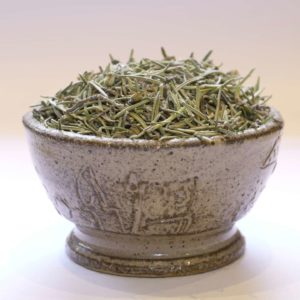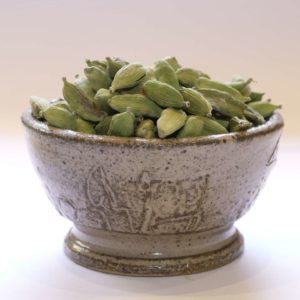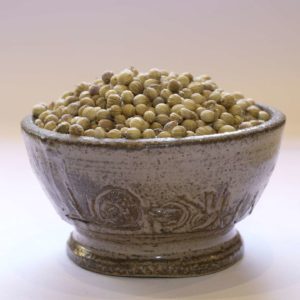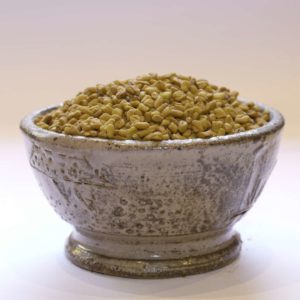0
- ONLINE GROCERY
- OUR HISTORY
- BLOG
- CONTACT
- MY ACCOUNT
- PRO
6,00 €95,20 € /kg
Discover our grade 5 (very high quality) organic pipe cinnamon from Sri Lanka. Genuine Ceylon tube cinnamon is often confused with cassia. It has a more complex, less aggressive nose than cassia. The wild cinnamon tree can reach 15 meters in height, but since man has exploited it for its tawny color and inimitable taste, it has been reduced to 2 to 3 meters. Its bark is scraped and sliced into fine ribbons which, when dried, curl up on themselves. Discover our organic ground cinnamon made from genuine Sri Lankan cinnamon pipe.

Warm, sweet and slightly pungent, cinnamon has been one of the queens of spices since Antiquity ( green cardamom is also often referred to as the Queen of Spices). Precious as gold before the Middle Ages, it subsequently became more affordable, accompanying an incredible number of dishes from the 13th century onwards.
There are four types of cinnamon: Chinese cinnamon (cassia), Saigon cinnamon, Padang cinnamon and Sri Lankan cinnamon (true cinnamon). There is no Appellation d'Origine Contrôlée for the latter, but all these varieties have the right to be called cinnamon.
Harvesting cinnamon is a long and painstaking process. Every year at rainy time, the harvesters cut off the current year's branches of the cinnamon tree (they are generally between 1m and 1m50 long), then take them to the workshop to work on the bark.
The branch, which is a good 3 centimetres in diameter, is scraped all the way through to remove the first bark; it is in fact the second that is consumed. Once the scraping is complete and the second bark is exposed, it's time for the incision. The second skin is split and peeled off the branch, wrapping around itself as it dries.
The pieces are then fitted together like a fishing rod, to form a cinnamon stick about 1m long. The larger pieces are then filled with the smaller ones, which are then wrapped around each other.
The large, 80 cm-long stalk is then rolled on the ground, much as you would roll bread dough under your hands to make a string. After a few days, they are grouped together in bundles of several dozen large sticks. The cooperatives then collect them.
Once in the cooperative's workshops, the bundles are cut into small 8cm lengths (generally) and then put through a steam oven for sterilization. Powdered cinnamon is made from the leftover shavings not used to make cinnamon pipe.
Known since antiquity, the term cinnamon didn't appear until the 12th century, cinnamome being its original name. It was mainly used for its therapeutic virtues (digestion) and for various funeral rites, including cremations, as it partially masked odors. Cinnamon really came into its own in the Middle Ages. It was used in a number of beverages and in one of the first spice blends, the famous Camelin blend (cinnamon and ginger). Cinnamon was added to red Hypocras wine (dessert wine) and white Clarée wine (starter wine), and its possession was a sign of wealth, a veritable social barometer. The Camelin blend was present in 10% of French recipes in the 15th century, particularly in sauces and especially in the Camelin aulx sauce! Try garlic confit with cinnamon...
In France, cinnamon is often associated with apples or chocolate, whereas in Asia and Africa, it's more often used in savory dishes based on game meats or poultry. To respond culinarily to these two opposing uses of cinnamon, I'd like to cite two recipes. Peach soup with wine and spices and chicken tagine with prunes, cinnamon, almonds and cumin...
The different qualities of cinnamon :
There are many grades of cinnamon in Sri Lanka, from fine powder to Alba, about ten in all. The Alba grade, which is very fine and crunchy like a puff pastry, is the most expensive cinnamon on the market, with a very pronounced taste and aroma. Between 5 and 7 mm in diameter, with a single bark wrapped around itself.
C5 and C5 special are the two main cinnamon grades, both in shape and taste. From 10 to 12 mm in diameter, these two grades make up 90% of the Sri Lankan cinnamon pipes you buy at Place des Epices.
The C4 category is the most popular on the international market, measuring just over 15mm in diameter. H1, H2 and H2 super are pieces of cannelier over 25mm in diameter and up to 35mm. This first category is highly prized, and you'll find some of them in our pipes. M4 and M5 are the least noble cuts, but in high demand, mainly on the South American market. H3 is the largest size, with a minimum of 38mm.
The C stands for Continental, the M for Mexico and the H for Hamburg.
Common name: Cinnamon
Botanical name: Cinnamomum verum J. Presl
Botanical family: Lauraceae
Part used: Bark
Origin: Sri Lanka, Madagascar
Harvesting time: ND
Harvesting technique: Manual
Storage : Dry
Grown / Wild : Grown
Guarantee: Organic, certified by FR-BIO-01
Storage conditions: Protect from heat, light and humidity.
Shape: Pipe, tube
Appearance: Bark rolled up into a tube
Granulometry, size: 8 to 10 cm
Color: Orange-brown
Odor: Mild, characteristic, very aromatic
Taste: Aromatic, characteristic
| Weight | 50 g |
|---|---|
| Weight | 50g pouch, 100g pouch, 200g pouch, 500g pouch |
| Botanical nomenclature | Cinnamomum verum J. Presl |
| Color | Orange-brown |
| DLUO | |
| Continent-Country | Asia |



